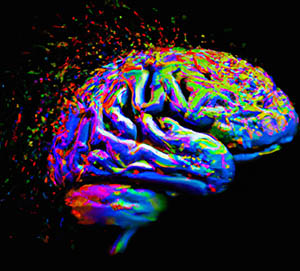The Neuroscience of Synesthesia
Synesthesia is a neurological phenomenon where the stimulation of one sensory pathway triggers the involuntary stimulation of another pathway, creating a unique sensory experience. Synesthesia has been studied for decades, but only recently have scientists begun to understand the neuroscience behind this intriguing phenomenon.
One key area of study is the brain mechanisms that underlie synesthesia. Research suggests that synesthesia involves changes in the way that the brain processes sensory information. In particular, scientists have found that there is increased connectivity between areas of the brain that process different types of sensory information.

For example, in grapheme-color synesthesia, which is one of the most common forms of synesthesia, the letters and numbers that a person sees trigger the activation of the part of the brain responsible for processing color information. This leads to a perception of color that is triggered by the visual input.
Studies have also shown that synesthesia may be related to differences in the way that the brain is wired. In one study, researchers used magnetic resonance imaging (MRI) to study the brains of synesthetes and found that they had more connections between brain regions than non-synesthetes. This increased connectivity may allow for the cross-activation of different sensory pathways that is characteristic of synesthesia.
In addition to the brain mechanisms that underlie synesthesia, research has also investigated the genetics of synesthesia. Studies have found that synesthesia tends to run in families, suggesting that it has a genetic component. However, the specific genes that are involved in synesthesia are not yet well understood.
One particularly fascinating aspect of synesthesia is the way that it can affect perception. For example, in some forms of synesthesia, such as sound-color synesthesia, a person may experience colors when they hear sounds or music. This can lead to a richer and more complex experience of music, with each note or chord triggering a specific color.
In other forms of synesthesia, such as grapheme-color synesthesia, the colors associated with letters and numbers can impact reading and writing. Some studies have suggested that synesthetes may be better at certain tasks, such as memory recall and mental rotation, due to their unique perceptual experiences.
However, synesthesia is not always a positive experience, and some synesthetes may find it challenging to cope with their experiences. For example, synesthetes may struggle to explain their perceptions to others, and some may feel isolated or misunderstood. Additionally, some synesthetes may find their experiences overwhelming, particularly if they experience strong emotions associated with their perceptions.
Despite these challenges, synesthesia remains a fascinating and valuable area of study. By understanding the neuroscience behind synesthesia, scientists may be able to shed light on the workings of the brain and how sensory information is processed. Additionally, the study of synesthesia may lead to new insights into how we perceive and experience the world around us.
Overall, the neuroscience of synesthesia is a complex and multifaceted area of study that holds tremendous potential for advancing our understanding of the brain and perception. As scientists continue to explore this phenomenon, we can expect to gain new insights into the nature of consciousness, perception, and the human experience.